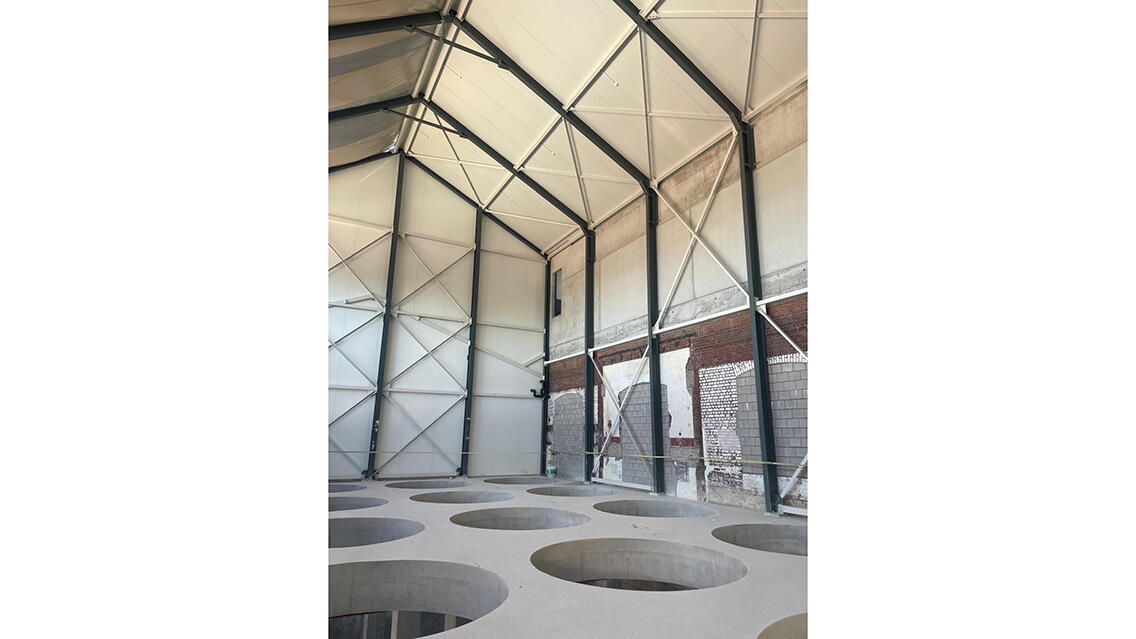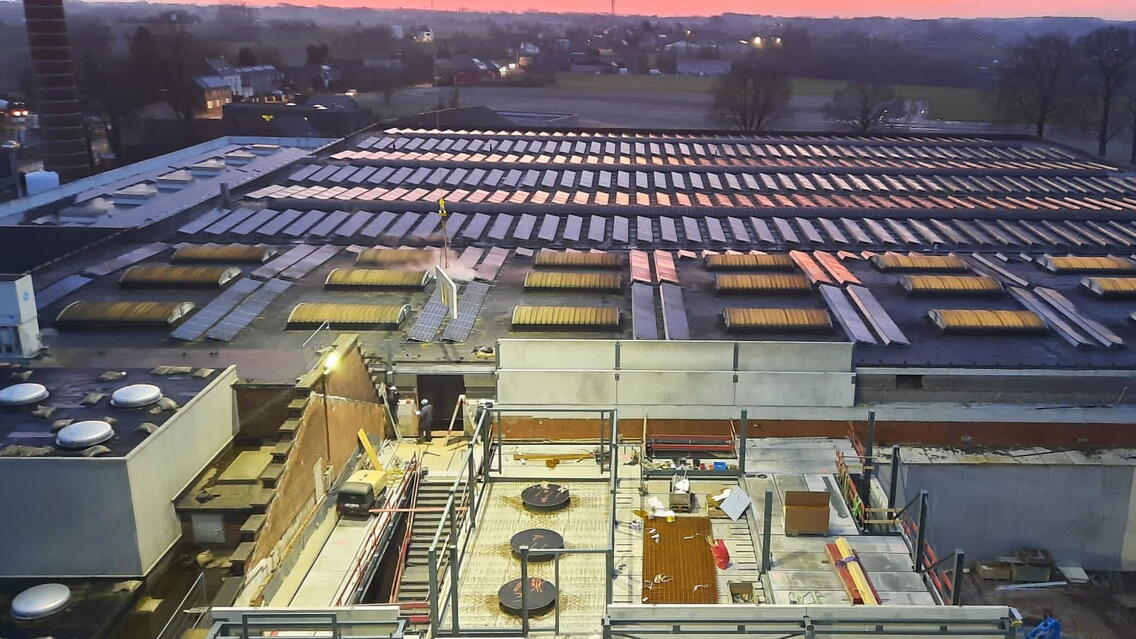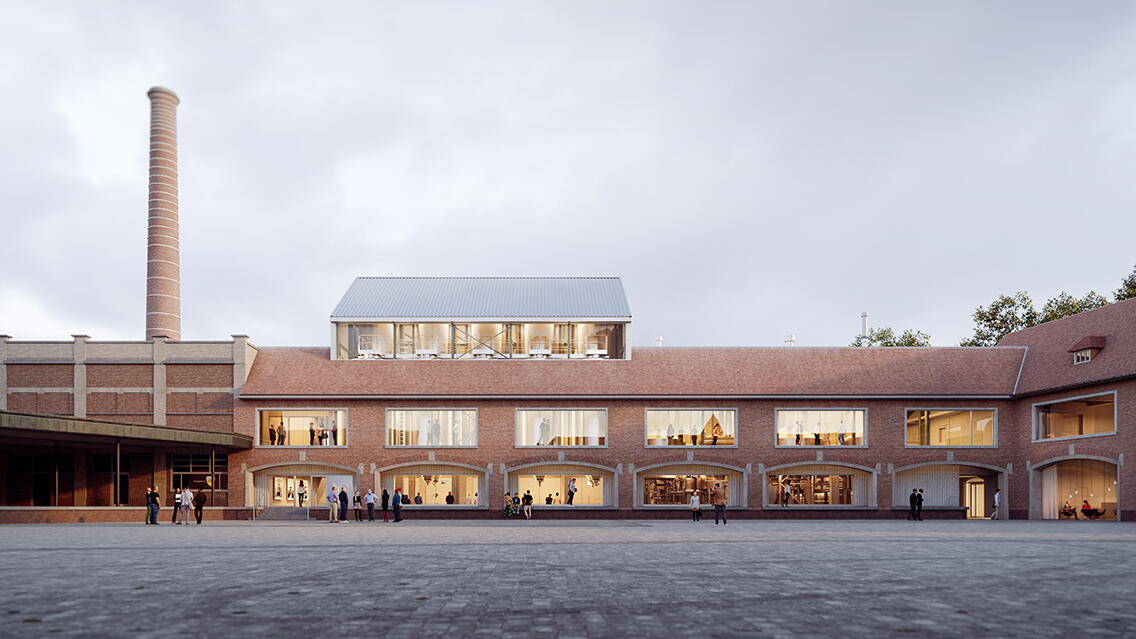Brewery Roman in the Oudenaard borough of Mater is investing in a new brewery hall. The current hall dates back to 1927. Roman is the oldest family brewer in our nation and is known for the Gentse Strop and Ename beers. The expansion will allow them to produce almost double their output of beer, which will increase their annual capacity to 200,000 hectolitres. The new brewery hall is the culmination of a 15-million-euro investment project that will revamp the entire production line. The building plans are in the hands of the Oudsbergen construction company Mathieu Gijbels, which has offices in Deinze.
The current brewery hall that houses beautiful copper brew kettles is about to celebrate its centenary. However, it is approaching its limits. Not only its maximum capacity but also in terms of energy consumption and ergonomics. A new brewery hall is urgently needed for the brewery to keep growing. The new brew kettles will handle an annual capacity of 200,000 hectolitres, immediately doubling the current volume. But huge steps will also be taken in sustainability. Steam consumption, water use, and heat loss will all be reduced. The latter is a big win for brewers and operators. They will be able to work in more ergonomic and sustainable conditions.
For this project, we used Tekla to create a comprehensive digital representation that detailed the entire steel structure and all precast concrete elements at a detail level of LOD400. Our BIM modelers collaborated with external parties for the remaining elements of the building. They exchanged files in .ifc or other formats to create a coherent, integrated model within Tekla.
Three Tekla modelers used Model Sharing to collaborate closely, simultaneously, and with other stakeholders to bring the model to life. This synergistic approach ensured the model always remained up-to-date within Trimble Connect, thanks to automatic updating. All project members had a real-time overview of the project status at all times.
The existing building was quite complex, so 3D scanning was chosen in the preliminary phase so that a detailed point cloud could be generated, which was integrated into the Tekla model within Trimble Connect. This made it indispensable for discovering potential conflicts and fine-tuning the model when needed, especially in relation to the partial preservation and reconstruction of the façade.
Integrating various partial models into Tekla and Trimble Connect was a crucial step. These included technical equipment, HVAC systems, and architectural designs. These models were delivered in various formats, such as .ifc, .obj, and .skp, making it easy to check for conflicts thanks to carefully specified filters.
A clear agreement on a proper reference point between all parties facilitated the integration of the different sub-models into Tekla and Trimble Connect. This included a base reference point for exports and imports between all parties and a specific reference point in Lambert72 for communication with surveyors and excavation workers.
Due to the long distances, assembling precast elements was challenging. This required careful consideration of the maximum element weights in terms of the capacity and position of the mobile tower crane. We used an integrated plug-in in the Tekla model to run a visual simulation that allowed us to anticipate potential problems by repositioning the crane or reducing the weight of elements.
Trimble Connect proved to be an indispensable tool on-site as well. It allowed us to visualize complex situations in 3D, access essential data such as brand numbers and weights, and communicate comments and solutions efficiently using 'To-Dos’. We could do all this without the need for traditional 2D plans during the preliminary phase, such that even delivery sequences and schedules were discussed directly within the platform.
Plotting out the complete structure with a total station guaranteed the precise location of the new building within the environs of the existing one. We also exported layout points from Tekla to an on-site total station.
A nice addition was the implementation of Trimble Connect AR. This provided an innovative way to visualize building plans using augmented reality, which gave a clear picture of the project to be built.
Finally, the production of the steel structure was fully managed within our own manufacturing facilities, highlighting the smooth collaboration between the design team and the production workshop. Tekla models divided into different production phases were shared with the steel workshop using model sharing. This allowed different machines to be controlled directly from the Tekla model. All told it's a testimony to the integrated and seamless workflow that typifies our projects and allows us to work with extreme precision and efficiency. In fact, the drawings and plans were taken directly from the Tekla model and used in the production process. Every phase of the project, from design to implementation, was notable for its efficient cooperation and technological integration. So, the project not only met but also exceeded the high requirements of contemporary construction projects.





